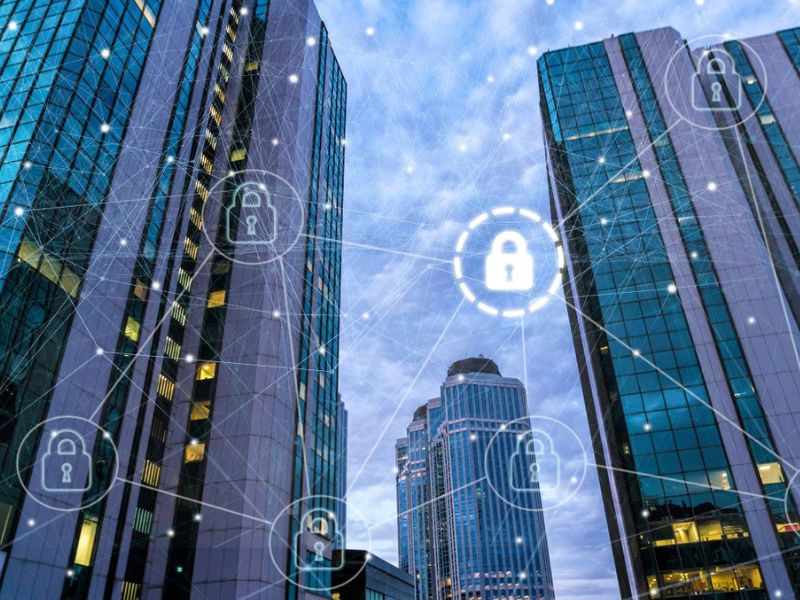Home » The Security Ricks Of Changing Package Owners On Cyber Attack



As we look ahead to 2025, several trends are shaping the future of cybersecurity:
AI and machine learning are playing an increasingly important role in detecting and responding to cyber threats in real-time. These technologies can analyze massive amounts of data to identify anomalies and predict potential attacks.
Passwords are becoming a thing of the past. Biometric authentication methods, such as fingerprint scanning and facial recognition, are gaining traction as more secure alternatives.
While quantum computing holds incredible promise, it also poses new challenges for cybersecurity. Businesses must prepare for the potential impact of quantum computers on encryption and data security.
With consumers demanding greater control over their personal data, businesses must prioritize privacy by design. This means embedding privacy measures into your systems and processes from the ground up.


In 2023 alone, global cybercrime costs were estimated to exceed $8 trillion, according to a report by Cybersecurity Ventures. By 2025, this figure is projected to climb to $10.5 trillion annually. Cybercriminals are no longer lone hackers sitting in dimly lit basements; they are part of well-organized networks capable of executing highly sophisticated attacks. From ransomware and phishing to advanced persistent threats (APTs), the arsenal of cybercriminals is vast and constantly evolving. Businesses that fail to implement robust cybersecurity measures risk becoming easy targets, with potentially catastrophic financial and reputational consequences.
The proliferation of cloud services, the Internet of Things (IoT), remote work, and hybrid work models has exponentially expanded the digital attack surface. With more devices and endpoints connected to business networks than ever before, vulnerabilities abound. Consider this: a single compromised IoT device, such as a smart thermostat in your office, could serve as a gateway for hackers to infiltrate your entire network. Without a comprehensive cybersecurity strategy, businesses leave themselves exposed to these entry points.
Governments and regulatory bodies worldwide are cracking down on data breaches and privacy violations. From the European Union’s General Data Protection Regulation (GDPR) to the California Consumer Privacy Act (CCPA), the regulatory landscape is becoming increasingly stringent. In 2025, businesses that fail to comply with these regulations could face hefty fines, lawsuits, and irreparable damage to their reputation. A robust cybersecurity strategy isn’t just about protecting your data—it’s also about ensuring compliance and avoiding legal pitfalls.
Failing to prioritize cybersecurity in 2025 can have far-reaching consequences. Let’s break down what’s at risk for businesses that neglect this critical area:
The financial impact of a cyberattack can be devastating. Ransomware attacks, for instance, demand hefty payouts that can range from thousands to millions of dollars. Even if you don’t pay the ransom, the cost of downtime, data recovery, and rebuilding trust with customers can be immense.
Your customers trust you with their sensitive data. A single breach can shatter that trust, leading to lost business, negative press, and long-term brand damage. In an age where consumers are more privacy-conscious than ever, maintaining a secure digital environment is crucial for customer loyalty.
Cyberattacks can bring your business operations to a grinding halt. Whether it’s a distributed denial-of-service (DDoS) attack that takes down your website or malware that cripples your internal systems, the resulting downtime can be incredibly costly.
For businesses that rely on proprietary technology, trade secrets, or innovative products, a cyberattack can lead to the theft of intellectual property. This not only impacts your competitive advantage but could also jeopardize your future growth.
A strong cybersecurity strategy is not a one-size-fits-all solution. It requires a tailored approach based on your business’s unique needs, industry requirements, and risk profile. Here are the key pillars every business should consider:
The foundation of any cybersecurity strategy is understanding your risks and vulnerabilities. Conduct regular risk assessments to identify potential threats and weak points in your systems. Utilize threat intelligence tools to stay informed about emerging cyber risks specific to your industry.
With the rise of remote work and IoT devices, endpoint security is more critical than ever. Invest in advanced endpoint protection solutions that can detect and neutralize threats before they cause damage.
Human error remains one of the leading causes of cyber incidents. In 2025, businesses must prioritize employee training to recognize phishing attempts, practice good password hygiene, and report suspicious activities promptly. Cybersecurity is a shared responsibility, and your employees are your first line of defense.
The traditional approach to cybersecurity, which assumes that everything inside the network is safe, is no longer sufficient. A Zero Trust architecture operates on the principle of “never trust, always verify,” requiring strict authentication and authorization for every user and device attempting to access your systems.
No matter how robust your defenses are, breaches can still happen. Having a well-documented incident response plan ensures that your business can act quickly and effectively in the event of a cyberattack. This plan should outline roles, responsibilities, and steps to mitigate damage and recover operations.
Cybercriminals often exploit outdated software and unpatched vulnerabilities. Ensure that your systems, applications, and devices are regularly updated to protect against known threats.
Many businesses rely on third-party vendors and partners, which can introduce additional cybersecurity risks. Conduct thorough due diligence and establish clear security requirements for all third-party relationships.